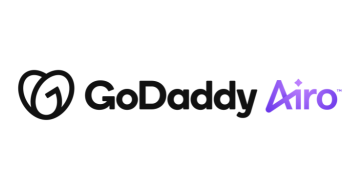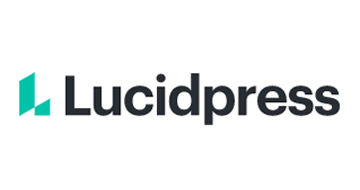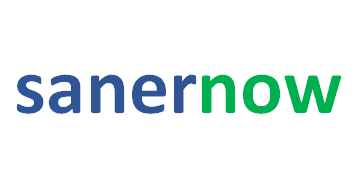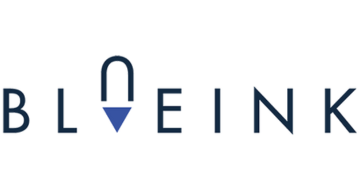
| Starting Price | $11.99/mo |
|---|---|
| Pricing Model | Per user bundled |
| Free Trial | No |
| Free Version | No |
Manage and organize your digital assets effortlessly with the best DAM software. With the right DAM software, you can streamline your asset management workflows, improve collaboration, and maximize the value of your digital media.
At SaasGenius, we help you find the best value DAM software.
Are you looking for the ideal digital asset management software to optimize your asset workflows? In our list you'll find the best digital asset management software that we've carefully selected based on extensive research and analysis.

| Starting Price | $11.99/mo |
|---|---|
| Pricing Model | Per user bundled |
| Free Trial | No |
| Free Version | No |

| Starting Price | $10/month |
|---|---|
| Pricing Model | Subscriber based, Quotation based |
| Free Trial | Yes |
| Free Version | Yes |

| Starting Price | Contact for price |
|---|---|
| Pricing Model | Subscriber based |
| Free Trial | Yes |
| Free Version | No |

| Starting Price | $12 / month |
|---|---|
| Pricing Model | Subscriber based |
| Free Trial | Yes |
| Free Version | No |
Digital assets drive every successful business strategy, yet managing thousands of images, videos, documents, and brand materials without the right system creates chaos. Digital asset management (DAM) software transforms how organizations store, organize, and distribute their digital content from one centralized platform.
Whether you’re a marketing team handling massive multimedia campaigns or a creative agency managing client assets, the right DAM solution streamlines workflows, enforces brand consistency, and turns your digital chaos into organized, searchable libraries that fuel productivity.
Digital assets are the files you use to run your business, whether they are photos, videos, audio files, or documents. Managing these digital assets can be time-consuming, so digital asset management solutions streamline and automate this process.
DAMs help you organize and manage your entire digital asset library from one central location, making it easier to find what you need when you need it. They also make it easier for others in your organization to access the information they need for their jobs.
Users can install a DAM on an internal server or cloud-based storage services like Dropbox or Google Drive. This software scans all of the files in your library. It then organizes them into different categories based on things like the date created or subject matter so you can easily find what you’re looking for whenever needed.
A digital asset management solution is content management software that helps you organize and manage your digital assets. Digital assets can be anything from:
Different types of businesses use digital asset management systems. This includes marketing agencies, media companies, creative agencies, and more.
Digital asset management systems help you quickly locate your files. This is wherever they are stored in the company. It can range from a laptop to a network drive or cloud storage service.
Modern DAM platforms leverage artificial intelligence to automate tedious tasks. Auto-tagging capabilities analyze your images and videos to automatically apply relevant keywords and metadata. Smart search functionality uses machine learning to understand natural language queries, helping teams find assets faster than traditional keyword searches.
Structured metadata systems allow you to categorize assets with custom fields, copyright information, usage rights, and campaign data. This creates a searchable database that transforms how quickly teams locate specific assets.
Content optimization features automatically serve the right image format, resolution, and size based on the end user’s device and connection speed. This ensures fast loading times across websites, mobile apps, and social media platforms.
User permission systems restrict access to sensitive assets while enabling self-service for approved materials. Brand compliance tools ensure only current logos, approved imagery, and on-brand templates reach external audiences.
| Feature Category | Essential | Professional | Enterprise | Examples |
|---|---|---|---|---|
| Storage | 100GB-1TB | 5-10TB | Unlimited | Cloud/hybrid options |
| Users | 5-25 | 50-100 | Unlimited | Role-based access |
| AI Features | Basic tagging | Auto-categorization | Advanced analytics | Face recognition, content analysis |
| Integrations | 5-10 apps | 25-50 apps | 100+ apps | Adobe, Slack, CRM software |
| Support | Phone + chat | Dedicated success manager | 24/7 availability |
At SaasGenius, we use a meticulous ranking methodology to determine the best digital asset management software available. Through extensive research and analysis, we provide reliable and unbiased recommendations that guide you to the ideal DAM software that meets your needs and simplifies your work.
Our evaluation process follows the comprehensive Genius Score methodology that examines four critical factors: pricing value, ease of use, feature completeness, and support quality. This systematic approach ensures you receive objective recommendations based on verified user feedback and extensive testing.
Digital asset management software is an excellent tool for businesses of all sizes. It allows you to store, manage, and share your digital assets in an organized way. Here are some of the main features of digital assets management software:
The digital asset management software should be easy to use. It should have a user-friendly interface, and you should be able to navigate it with ease. The developers should also ensure that the software is compatible with your operating system. This will make it easier for you to use the software on any device and not just one particular device.
A good digital asset management software should provide secure storage for all your assets. It means that it should have strong encryption capabilities and high-level security measures so that no one can access your data without your permission.
You can also set permissions on each file separately. Only selected people can see specific files and add password protection on certain folders so that only authorized users can access them.
You can organize your files into folders or groups with the help of tags and categories. This will help you find specific files easily when needed or when required for projects or clients. There are also some advanced organizational tools like tagging and searching, which allow you to make as many different groups as possible to organize things according to your needs.
Digital asset management software is one of the most critical pieces of any modern digital marketing team’s technology stack. It’s also one of the most critical aspects of your overall marketing strategy.
The benefits of using digital asset management software are many, and they include:
One of the biggest benefits of using digital asset management software is that it helps keep your organization in line. You can organize all of your images and videos into folders so that it’s easy to find them when you need them. This also makes it easier for others within the company to find what they need.
Having a security system ensures that only authorized personnel have access to sensitive information such as customer data or employee records. It also reduces security risks if someone leaves your company or changes positions, as they will no longer have access to these files.
Another benefit of using digital asset management software is sharing content with anyone, anywhere. You can share your files with anyone in the world at any time. Many DAM systems provide sharing features that allow you to send a link to your client or colleague, so they can view the file on their computer or mobile device. This is ideal for sending documents, presentations, and images to others for review purposes.
Digital asset management software is a must-have for any company that produces content. From small businesses to large corporations, digital asset management (DAM) platforms allow businesses to create and manage all of their digital files in one place.
Marketing departments benefit enormously from DAM systems. With campaigns spanning multiple channels and requiring consistent brand messaging, marketing teams need quick access to approved logos, product images, and campaign assets. DAM software ensures everyone uses current, on-brand materials while tracking asset usage across campaigns.
Creative agencies managing client assets across multiple projects require sophisticated organization systems. DAM software provides client-specific access controls, version management, and approval workflows that streamline creative production while maintaining client confidentiality.
Online retailers managing thousands of product images, descriptions, and marketing materials rely on DAM systems to automate product catalog updates. Integration with e-commerce platforms ensures product information stays synchronized across all sales channels.
Large corporations with distributed teams need centralized asset management to maintain brand consistency. DAM software provides the governance controls, compliance tracking, and audit capabilities required for enterprise-scale content management.
Companies that produce content can use DAM software to store, organize and manage their photos, videos, and other digital assets. The software allows you to tag your files with metadata like keywords or descriptions to search through them easily. It lets you easily share these files with others in your organization or on social media channels.
Successful DAM deployment requires integration with your existing technology stack. Consider how your DAM will connect with your CRM software for customer-specific assets, your email marketing platform for campaign materials, and your social media management tools for content distribution.
User adoption drives DAM success. Implement training programs that demonstrate immediate value to each user role. Create asset naming conventions and metadata standards before launch. Establish clear governance policies for asset uploads, approvals, and distribution.
Track these key performance indicators to measure your DAM investment:
Digital asset management software can be expensive, but it doesn’t have to be. If your company is starting and has limited needs, many affordable options will get you started. The best DAM platforms cost less than $100/month and are designed for small businesses.
Subscription-Based Pricing dominates the DAM market, with most providers offering monthly or annual plans. Annual contracts typically provide 15-20% discounts compared to monthly billing.
Per-User vs. Unlimited User Models significantly impact total cost. Per-user pricing can quickly become expensive as teams grow, while unlimited user models provide better scalability for larger organizations.
Storage-Based Pricing varies dramatically between providers. Some charge per terabyte, while others include generous storage allowances in their base plans. Consider your current storage needs and growth projections when evaluating options.
The most common pricing models are monthly subscription fees and annual contracts. Paying a monthly fee allows you to use the software as much as you want, and there’s no penalty if you cancel your account before the contract expires. Annual contracts generally include a free trial period to try before you buy.
The best digital asset management software costs less than $100/month
There are many different types of digital asset management software, depending on what you need from it. Here are some examples:
A file management software is the most common type of DAM system. It allows you to organize your content into folders, tags, and keywords, making it easier to find files later.
A good file management system should allow you to create hierarchical folders that users can share with others in the organization. It will also allow you to assign metadata (such as caption and copyright information) to individual files or groups of files at once.
The content management systems (CMS) allow you to manage content on your websites, such as blog posts and pages. They also allow users to upload and download images directly from the site without using FTP software.
This is ideal for businesses who want to create a website but don’t want to hire someone else to do it for them. This type of software is useful if your company has multiple employees who need access to their assets.
An image hosting service is one type of digital asset management software that allows you to upload your images onto their site. They have a cloud-based storage space where you can store all your images for free or for a small fee per month or year.
You can then share these images with others online or download them onto your computer. Some image hosting services allow users to customize their site, which looks different from others who use the same service. This allows you to brand yourself as an expert in your field, so people will recognize you easily when they see your blog posts or social media pages.
AI-powered content analysis has become standard across leading DAM platforms. Advanced solutions now offer facial recognition, object detection, and sentiment analysis to automatically categorize and tag assets. Generative AI capabilities allow teams to create new assets from text prompts while maintaining brand consistency.
Zero-trust security models are becoming essential as remote work increases digital asset access points. Advanced audit trails and digital rights management help organizations maintain compliance with regulations like GDPR and CCPA.
Modern DAM systems prioritize developer-friendly APIs that enable seamless integration with existing workflows. Headless DAM solutions allow organizations to separate content management from content delivery, providing greater flexibility for multi-channel distribution.
Intelligent workflow engines automate approval processes based on asset type, destination, and user roles. Real-time collaboration features enable teams to provide feedback directly on assets, reducing email chains and accelerating project timelines.
Digital assets are a valuable asset to any company’s brand strategy. The following are some trends in digital asset management software:
Cloud storage is one of the most popular methods for storing large amounts of data — more than what can be stored on a single computer or server. Google Cloud Storage has been integrated into many DAM solutions so users can store all their content in one place without worrying about capacity limits on individual systems.
AI refers to computer systems that can learn from data without being explicitly programmed by humans. Moreover, AI is being incorporated into many DAM solutions so they can automatically sort through large amounts of data and identify relevant content for users based on keywords or metadata tags.
The first thing to look for in a DMS is its user-friendly interface. It should be intuitive enough that even someone with little or no experience can use it efficiently. The best way to test this is by giving it to a few people with different levels of expertise and seeing how they react.
Conduct a comprehensive asset audit to understand your current digital inventory. Document file types, storage locations, naming conventions, and access patterns. This baseline assessment guides your DAM configuration and migration strategy.
Develop governance policies before launching your DAM system. Define asset naming conventions, metadata standards, approval workflows, and user access controls. Clear policies prevent chaos and ensure long-term system effectiveness.
Prioritize high-value assets for initial migration. Focus on frequently accessed files, current brand materials, and campaign-critical assets. This approach provides immediate value while allowing time for comprehensive migration planning.
Clean house during migration. Remove outdated, duplicate, and low-quality assets before importing to your new DAM system. This cleanup improves system performance and reduces ongoing storage costs.
Role-specific training programs accelerate adoption. Tailor training sessions to show each user group how DAM solves their specific challenges. Marketing teams need different functionality demonstrations than creative teams or sales personnel.
Champions programs drive organization-wide adoption. Identify enthusiastic early adopters in each department to become DAM ambassadors. These champions provide peer-to-peer support and feedback for continuous system optimization.
Augmented and virtual reality assets will require specialized DAM capabilities as these content types become mainstream. Evaluate whether your chosen platform can handle 3D models, VR videos, and interactive content.
Blockchain integration for digital rights management and asset provenance tracking is emerging as a differentiator for high-security environments. Consider whether your industry might benefit from these advanced verification capabilities.
Financial stability and product roadmap indicate long-term viability. Research your vendor’s funding status, customer growth, and product development plans. A DAM migration is expensive, so choose a vendor positioned for long-term success.
Community and ecosystem strength provide ongoing value. Vendors with active user communities, extensive integration marketplaces, and strong developer ecosystems offer better long-term support and innovation opportunities..
Digital asset management software transforms content chaos into organized, searchable libraries that fuel business growth. The right DAM solution depends on your organization’s size, industry requirements, integration needs, and growth trajectory.
For small to medium businesses, solutions like Dash, Air, or Canto provide excellent value with intuitive interfaces and essential features. Enterprise organizations benefit from comprehensive platforms like Adobe Experience Manager, Bynder, or MediaValet that offer advanced governance, security, and integration capabilities.
Success requires more than software selection. Effective DAM implementation demands careful planning, user training, and ongoing optimization. Organizations that invest in change management and user adoption achieve significantly better results than those focusing solely on technology deployment.
Start your DAM evaluation by clearly defining your organization’s digital asset challenges, then use our comparison framework to identify solutions that address your specific requirements while providing room for future growth.